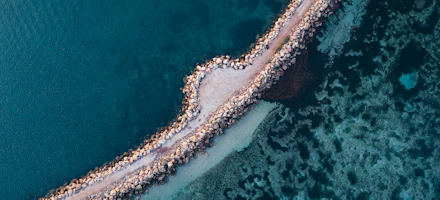
Kalbarri Skywalk (Kaju Yatka)
Breathtaking twin skywalks in Kalbarri National Park boast stunning vistas of the Murchison River Gorge's rust-red cliffs, flowing water and bushland from high above.
The Kalbarri Skywalk (Kaju Yatka) consists of twin skywalks, built 100-metres apart at the Inyaka Wookai Watju site (the West Loop), which project 25-metres and 17-metres beyond the gorge rim and sit more than 100-metres above the Murchison River.
In addition to the skywalks, the precinct includes parking for cars, coaches and RVs/campervans, walk trails, interpretive signage, shade shelters, toilets and an eco-friendly kiosk.
Kalbarri is part of the traditional lands of the Nanda people, in the Yamaji region of Western Australia. The Skywalk's entry sign 'Kaju Yatka' is the Nanda words for 'sky' and 'to walk'. Inspired by the region's Aboriginal heritage and beauty, several local Indigenous artists have created interpretive artwork as an important part of the Skywalk experience, including the Beemarra serpent. Central to the dreaming story of the Nanda people, the serpent is sandblasted into the path to guide visitors. Message sticks welded with Aboriginal art make a 'forest' near the entrance to the Skywalk, and interpretive signage sharing the Nanda people's story and history is displayed in the shade shelter area.
The Skywalk kiosk conveniently serves food and drinks to visitors as they take in the views of the Murchison Gorge right next to the Kalbarri Skywalk. The catering company, 28 Villages, with the full support of the Nanda Aboriginal Corporation, will work together to explore opportunities for training and employment of Nanda people and the sale of Nanda artwork and souvenirs. This is a wonderful outcome that supports the strong relationship Parks and Wildlife Service and the Nanda Traditional Owners have developed over the past few years throughout the planning and development of the Kalbarri Skywalk project.
The Skywalk is accessible to people of all ages and abilities. Entry fees apply to the inland sites of Kalbarri National Park, however there are no additional fees to access the Skywalk precinct.





























